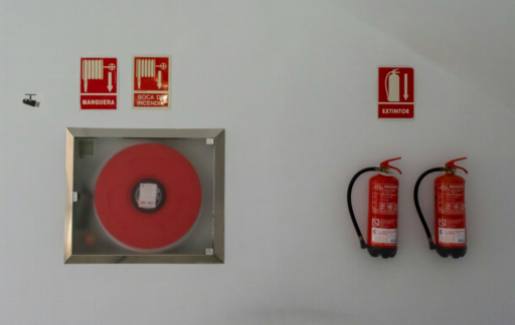Prevent Tragedy: The Vital Importance of Fire and Carbon Monoxide Detectors
22 November 2025 by Kenneth B.Every year, countless lives are tragically lost due to fires and carbon monoxide poisoning in homes. These silent killers can strike at any moment, often without warning. That's why it is crucial for every household to have properly functioning fire and carbon monoxide detectors installed. By understanding the risks, types of detectors, installation guidelines, maintenance procedures, legal requirements, and advanced features available, you can protect yourself and your loved ones from these deadly threats. Early detection can be the difference between life and death, so don't wait until it's too late to take action.

Photoelectric Smoke Detectors: This type of detector is more sensitive to slow-burning fires, such as those caused by smoldering mattresses or electrical fires. They use a light beam to detect smoke particles.
Dual-Sensor Smoke Detectors: These detectors combine both ionization and photoelectric technologies, providing a comprehensive detection system for various types of fires.
Carbon Monoxide Detectors: These detectors are specifically designed to detect the presence of carbon monoxide gas, which is colorless, odorless, and deadly. They can be stand-alone units or combined with smoke detectors for added protection.
Combination Smoke and Carbon Monoxide Detectors: These detectors provide a dual function of detecting both smoke and carbon monoxide, ensuring complete protection against both fire and poisoning risks.
Smart Smoke and Carbon Monoxide Detectors: These detectors connect to your home's Wi-Fi network and can send alerts to your smartphone in case of an emergency. They also offer additional features such as voice alerts and remote monitoring capabilities. It is important to choose the right type of detectors for your home based on the specific risks and needs of your living space. Properly installing and maintaining these detectors can potentially save lives in the event of a fire or carbon monoxide leak.
Install smoke detectors on every level of your home, including the basement and inside each bedroom.
Place carbon monoxide detectors near sleeping areas and at least 15 feet away from fuel-burning appliances.
Install detectors on ceilings or high on walls, as smoke and carbon monoxide rise.
Avoid placing detectors near windows, doors, or vents, as drafts can interfere with their operation.
Test detectors regularly to ensure they are functioning properly.
Replace batteries at least once a year and replace detectors every 10 years. Following these guidelines will help to ensure that your fire and carbon monoxide detectors are able to effectively alert you to potential dangers in your home. Proper installation and placement can mean the difference between life and death in the event of an emergency.

Understanding Fire and Carbon Monoxide Risks
It is crucial to understand the risks associated with these dangers in order to effectively protect yourself and your loved ones. Fires can start suddenly and spread rapidly, engulfing a home in a matter of minutes. Common causes of house fires include cooking accidents, electrical malfunctions, heating equipment malfunctions, and smoking materials. Carbon monoxide, on the other hand, is a colorless, odorless gas that is produced by the incomplete combustion of fuels such as wood, gasoline, and natural gas. This toxic gas can accumulate in enclosed spaces and pose serious health risks, including dizziness, headaches, nausea, and even death. Both fire and carbon monoxide risks can be minimized by installing and maintaining appropriate detectors in your home. By understanding the dangers of these threats, you can take proactive measures to ensure the safety of yourself and your family.Types of Fire and Carbon Monoxide Detectors
Ionization Smoke Detectors: These types of detectors are best suited for detecting fast-burning fires. They contain a small amount of radioactive element that creates an ionization process, which detects smoke particles in the air.Photoelectric Smoke Detectors: This type of detector is more sensitive to slow-burning fires, such as those caused by smoldering mattresses or electrical fires. They use a light beam to detect smoke particles.
Dual-Sensor Smoke Detectors: These detectors combine both ionization and photoelectric technologies, providing a comprehensive detection system for various types of fires.
Carbon Monoxide Detectors: These detectors are specifically designed to detect the presence of carbon monoxide gas, which is colorless, odorless, and deadly. They can be stand-alone units or combined with smoke detectors for added protection.
Combination Smoke and Carbon Monoxide Detectors: These detectors provide a dual function of detecting both smoke and carbon monoxide, ensuring complete protection against both fire and poisoning risks.
Smart Smoke and Carbon Monoxide Detectors: These detectors connect to your home's Wi-Fi network and can send alerts to your smartphone in case of an emergency. They also offer additional features such as voice alerts and remote monitoring capabilities. It is important to choose the right type of detectors for your home based on the specific risks and needs of your living space. Properly installing and maintaining these detectors can potentially save lives in the event of a fire or carbon monoxide leak.
Installation and Placement Guidelines
Proper installation and placement of fire and carbon monoxide detectors is crucial in ensuring early detection and notification of potential dangers in your home. Here are some guidelines to follow:Install smoke detectors on every level of your home, including the basement and inside each bedroom.
Place carbon monoxide detectors near sleeping areas and at least 15 feet away from fuel-burning appliances.
Install detectors on ceilings or high on walls, as smoke and carbon monoxide rise.
Avoid placing detectors near windows, doors, or vents, as drafts can interfere with their operation.
Test detectors regularly to ensure they are functioning properly.
Replace batteries at least once a year and replace detectors every 10 years. Following these guidelines will help to ensure that your fire and carbon monoxide detectors are able to effectively alert you to potential dangers in your home. Proper installation and placement can mean the difference between life and death in the event of an emergency.